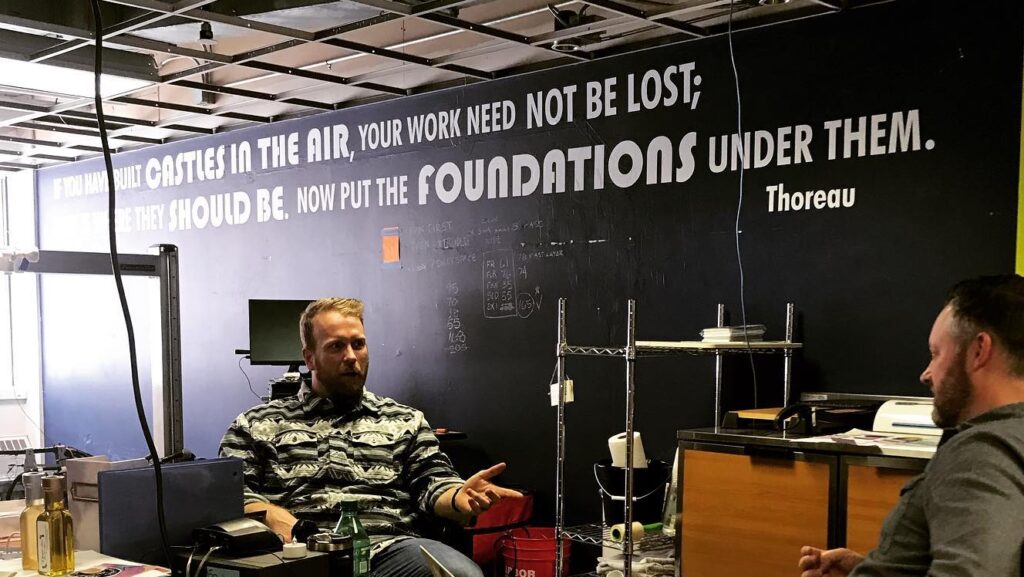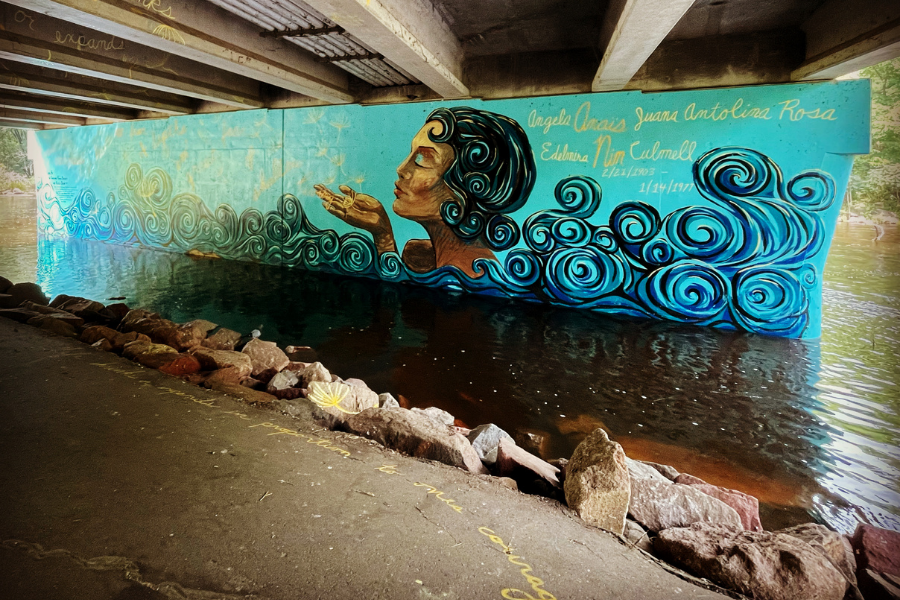Could your community benefit from more local artists and entrepreneurs? No matter where you live, we’d place a bet that the answer is yes. Creativity is the lifeblood of the new economy. At all sizes, thriving communities are those that actively support the development and expansion of locally grown ventures. From musicians adding to their audiences to franchises expanding their footprints, the highest economic return comes when other communities pay for ideas and projects developed within your community.
But for decades, the common economic development model reversed this equation. Site prep and tax incentives taught communities to see success when they attracted other communities’ businesses to set up shop in their town. You can hear this when residents ask, “When are we getting [BIG CHAIN]?” instead of, “How can we grow [LOCAL SHOP] into the [NEXT BIG THING]!”
Fortunately, we are learning how to reverse the impact of this decades-long economic development strategy. This guide features easy placemaking strategies we’ve developed through our work at CREATE Portage County, a nonprofit that accelerates creativity, connection, and collaboration to invest in people and their big ideas.
Here are three ideas to make local creativity more visible and build a culture that grows more local arts and innovation.
Brand Your Places
From the ways we get around to the ways we learn information, our economies are set up to advantage recognizable franchises. We know what to expect when we see golden arches, but it’s hard to find let alone know the value of a local restaurant when zipping by on a freeway.
Communities can improve the success of their local establishments by developing strong place-based branding. If residents and visitors trust in the developed identity of a place and know generally of the experiences and businesses that they are likely to find there, it becomes easier to trust in the quality of local establishments even if they individually are unknown to the consumer.
Consider this strategy at various levels of place:
-
1
Regional Identity
A strong regional identity will draw people to a collection of small towns, each offering a similar vibe.
-
2
Neighborhood or District Brand
A neighborhood or district brand within a community can focus experiences around food or makers to collectively market the establishments there.
-
3
Branded Market or Cooperative
A single building can be home to multiple business as a branded market or cooperative and share customers in the process.
Place-based branding is a great opportunity to leverage digital artists. Graphic designers, videographers, photographers, and other content creators can develop collateral that establishes a well-branded place over time. This can be a great way to integrate young and emerging digital artists in your community that are looking for unique projects to play with their own style and brand.
Placed-based marketing also merges well with local food, beverage makers, fine crafters, and other arts trades that add distinction to these places. Venues of note and products and crafts that are common to a region are the best fodder for cultivating that local feel. Lean into what is already there and develop a sum that adds value to each of its parts.
How We Did It:
At CREATE Portage County, we worked with our community to find an unused space large enough to activate a creativity hub and then moved our operations from a small office into that space. We were already paying for a copy machine, internet, and other basic needs. By opening up our doors and these resources to other creatives and entrepreneurs, we lowered their overhead, grew our capacity to provide support, and built a collective community doing creative things together. We fell in love with the Menominee word āhpēhtesewen, which speaks of the power gained from giving power away. We learned that our impact could be more “powerful” if we started seeing all our resources as shared. This culture of collaboration quickly grew beyond our space and across the greater community, which has seen one of the steepest spikes in entrepreneurship in the State of Wisconsin.

Put it into practice
-
Find your Competitive Advantage
Go through our Competitive Advantage: Knowing Your Value & Setting Yourself Apart exercise while thinking about your community!
-
Get Creative
What partnerships, projects, or branding would make your unique advantages really stand apart?
Who do you need to call up to make it happen?
Tell Local Stories
Points of distinction have value that goes beyond developing place-based brands. They also play a huge role in cultivating your larger creative culture. The Kauffman Foundation, in their research on building entrepreneurial ecosystems, talks a lot about visibility and putting entrepreneurs front-and-center.
When we only talk about Hollywood artists and Silicon Valley entrepreneurs, we send the message that creativity is something that happens for fancy people in faraway places. By celebrating our local artists, makers, innovators, and entrepreneurs, we help the next creatives see that they too can say yes to their pursuits.
Predominant cultural attitudes show up especially in rural places with a stifled creative culture. Sayings like “That’s not how we do things here,” and “Success is getting out of this town,” can be common in communities that don’t understand why their young people leave and don’t come back.
The arts have a rich history of storytelling. Leveraging trends that see rising interest in documentaries, spoken word poems, podcasts, and other forms of performance and public art can activate local artists in ways that capture and spread the creative energy in your community.
How We Did It:
Digital media production equipment is one of the key shared resources we’ve invested in at CREATE Portage County. If we wanted more local storytelling, we knew we had to support its production. We offer both a podcast studio and a video production studio to users of our creativity hub, and we’ve made mobile maker kits so that local producers can take gear with them out into our community. We recognized that we didn’t have to do all the storytelling ourselves. We were much better off creating opportunities for residents who wanted to make new media about what they were experiencing here. We’ve now supported more than a dozen local podcasts that highlight what is best about our community and who is behind that work.

Put it into practice
Think about where you are already spending time and money and how outsourcing that work can support local artists, makers, and producers in your community!
- If you’re doing a big project, hire a local filmmaker to document the process.
- Need stock photography? Create an Instagram challenge and pay for the best pics.
- Instead of trinkets to celebrate retirements, give gift certificate to local galleries.
- Encourage new or renovating businesses to put local art on their walls.
- Throwing an event? Outsource the food or music to a local creative.
- Tell the stories behind the work with each investment you make.
The best part? Working with local makers and producers often takes work off your plate
Paint These Ideas
The mural craze is proving to be a cost-effective way to initiate and spread your creative energy. For a reasonable dollar amount–often $5,000 or less–you can transform a cinderblock wall in a major commercial district or cultural corridor into an attraction that draws people to these key places.
Bright and abstract designs alone can be very effective, especially as a contrast to historic buildings in a location that hasn’t changed for a long time. The right piece can communicate the possibility of change and spark excitement for other changes to come. But the art also can integrate into both your place-based branding and your local storytelling.
Bold text-based murals that name districts or welcome people into them serve as wayfinding and as points of attraction themselves. Murals that celebrate local artists or innovators can inspire the next generation to follow their lead.
Be careful, though, of historic murals and pay close attention to who paints and is painted into your public art. Many small communities have installed historic murals, and while these can be very successful projects, they can also communicate that sense of “how we do things here” or worse yet, who belongs. In contrast, a future-focused mural project that invites more identities to participate can literally paint a picture of where your community is heading. The key point is to show your community that change can be beautiful and to invite as many people as possible to make that change with you.
How We Did It:
At CREATE Portage County, we’ve put this tool into practice through our PAINT THE COUNTY! initiative, which hired 13+ artists to work on new murals celebrating themes from food and farming to refugee experiences and resilience. We chose strategic locations in historic downtowns, near coffee shops and breweries, and along bike trails to get people moving across the county. We invested time building relationships, strengthening our connections with marginalized communities and emerging artists, so that we could maximize visibility through this project. In our first year, we installed the first Black, Latinx, Ho-Chunk, Filipino, HMoob, and LGBTQIA+ public art in Portage County.

Put it into practice
Are murals too big of an investment right now? Don’t worry – you can always start small!
You or your organization can paint trash cans, hide geocache-able sculptures, or promote live arts experiences. Get your community involved in both imagining and executing these projects and you will find them easier to pull off than you’d expected.
The most important thing is to celebrate local makers, creators, and innovators relentlessly.
Conclusion
It’s never too soon to start the journey. A few strategic investments and your community will soon be bubbling with sustainable, creative opportunities. It all starts with where you see your greatest assets. Is creativity something you are cultivating within or paying for from somewhere else? We all have a part to play in this work. Don’t be afraid to get out there and think creatively about partnerships, stories, and public art!
